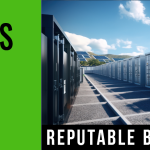 Carbon-free energy: Is the answer blowing in the wind? Perhaps, but the wind doesn’t always blow, nor does the sun always shine. The energy generated by wind and solar power is intermittent, meaning that the generated electricity goes up and down according to the weather.
Carbon-free energy: Is the answer blowing in the wind? Perhaps, but the wind doesn’t always blow, nor does the sun always shine. The energy generated by wind and solar power is intermittent, meaning that the generated electricity goes up and down according to the weather.
But the output from the electricity grid must be controllable to match the second-by-second changing demand from consumers. So the intermittency of wind and solar power is an operational challenge for the electricity system.
Energy storage is a widely acknowledged solution to the problem of intermittent renewables. The idea is that storage charges up when the wind is blowing, or the sun is shining, then discharges later when the energy is needed. Storage for the grid can be a chemical battery like those we use in electronic devices, but it can also take the form of pumping water up a hill to a reservoir and generating electricity when letting it flow back down, or storing and discharging compressed air in an underground cavern.
Motivated by a view that storage is a “green” technology, governments are increasingly promoting utility-scale and distributed energy storage. For example, in November 2017, New York Gov. Andrew Cuomo signed a bill mandating targets for storage adoption by 2030. Other states with similar policies are Oregon, Massachusetts, California and Maryland. Companies like Tesla also have been branding storage systems as clean technologies.
But do large storage systems lower emissions in our current grids? In a recent study, we found this isn’t necessarily the case – a reflection of how complex the electricity system can be.





